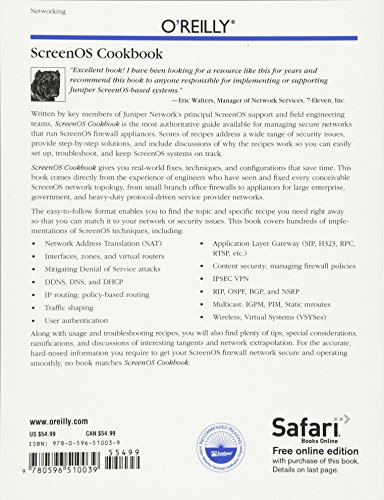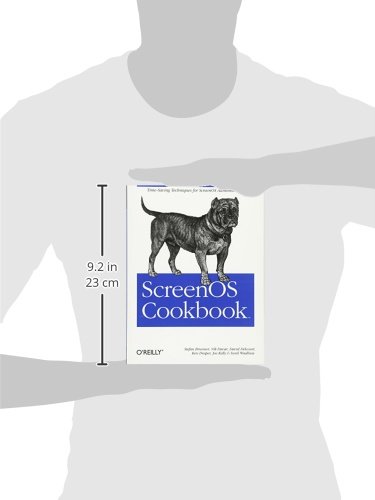



ScreenOS Cookbook: Time-Saving Techniques for ScreenOS Administrators
K**N
It doesn't seem to include all the commands and variables ...
It doesn't seem to include all the commands and variables related to entering a configuration update. For example, when configuring TACACS it doesn't let you know the related configuration command line.
D**.
It met my needs and was using to support Juniper security appliances
Written well and give both examples and good explanations. It met my need to allow me to support a Juniper security appliance with ScreenOS. t This book is very useful
K**.
Best reference for ScreenOS
For CLI users, this is the best reference to look to for configuring and troubleshooting Juniper netscreens and SSGs that use ScreenOS.
E**D
Four Stars
Had the info I needed and much more.
M**U
A great administrator guide who uses Juniper Firewall Products
Awesome book. The book covered well with the real life experience. You don't waste your time with what the OSI and IP is. The book goes to directly to the subject. Reccommended for who has at least CCNA knowledge and used to work on ScreenOS
S**M
Stefan is the man
ScreenOS may be dead or dying but Brunner is alive and well with great information and learning examples. Very well written O'Reilly book.
S**D
Five Stars
Great resource if you work on Netscreen and SSG firewalls.
J**N
This book is a must have for ScreenOS users.
Simply put, anyone who is currently evaluating or managing ScreenOS based Firewalls should own this book and have it close by.The 1st chapter of the book alone shows the most useful commands that every administrator needs to know. It also details the architecture of ScreenOS which is the key to creating and implementing a relevant security policy in any network.The book is well written and organized with CLI commands in bold and CLI responses in plain text which make it easy to differentiate what the user should be typing and what they should be seeing. (There are also some GUI screen shots in the book as well.) The book has excellent examples of packet walks, O.S. Architecture, and network diagrams.A huge benefit of the book is that it doesn't bore the user with the history of the Internet or TCP/IP, etc. It jumps right in to specific examples and configuration guidelines relevant to what the chapter is trying to cover. The book is also very current and covers almost the latest version of ScreenOS. A great example is that there is an excellent chapter on configuring NSRP (HA) with Dynamic Routing Protocols (to sync routes from DRP's) and how that is configured in ScreenOS 6.0 which was the first release to support that feature. ScreenOS 6.0 is a very current release of ScreenOS.As a user of ScreenOS for 5 years, I can absolutely say this book will be a welcome addition to my library!Last note: Chapter 21 covers VSYS or Virtual Systems which is a major strength of ScreenOS and not well understood by many users. That chapter alone makes the book worth the cost.
Trustpilot
2 days ago
2 months ago